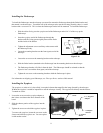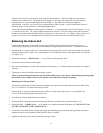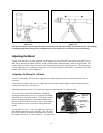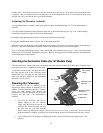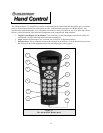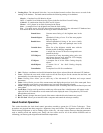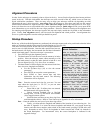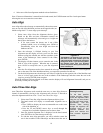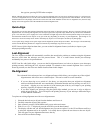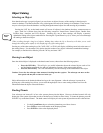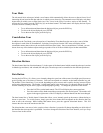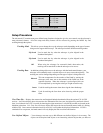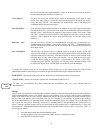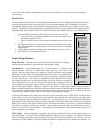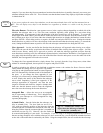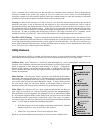19
the eyepiece, pressing ENTER when complete.
NOTE: Although the telescope allows the user to select the alignment stars, for best all-sky pointing accuracy it is still necessary
to select two alignment stars on one side of the Meridian and the third star on the opposite side of the Meridian. For this reason,
the hand control will only display stars that are on the same side of the Meridian for the first two alignment stars, then will only
display stars on the opposite side of the Meridian for the third alignment star.
Q
Q
u
u
i
i
c
c
k
k
-
-
A
A
l
l
i
i
g
g
n
n
Quick-Align uses all the date and time information entered at startup to align the telescope. However, instead of slewing to the
alignment stars for centering and alignment, the telescope bypasses this step and simply models the sky based on the information
given. This will allow you to roughly slew to the coordinates of bright objects like the moon and planets and gives the telescope
the information needed to track objects in any part of the sky (depending on accuracy of polar alignment). Quick-Align is not
meant to be used to accurately locate small or faint deep-sky objects or to track objects accurately for photography.
To use Quick-Align, simply select Quick Align from the alignment options and press ENTER. The telescope will automatically
use the entered date/time parameters to align itself with the sky and display Alignment Successful.
NOTE: Once a Quick-Align has been done, you can use the Re-alignment feature (see below) to improve your
telescopes pointing accuracy.
L
L
a
a
s
s
t
t
A
A
l
l
i
i
g
g
n
n
m
m
e
e
n
n
t
t
The Last Alignment method will automatically recall the last stored index positions to continue using the alignment
that was saved when the telescope was last powered down. This is a useful feature should your telescope
accidentally lose power or be powered down.
NOTE: Just like with Quick-Align, you can use the Re-alignment feature (see below) to improve your telescopes
pointing accuracy after using the Last Alignment method. To maintain a more accurate alignment over a series of
observing sessions, use the Hibernate feature described later in this chapter.
R
R
e
e
-
-
A
A
l
l
i
i
g
g
n
n
m
m
e
e
n
n
t
t
The Advanced Series telescopes have a re-alignment feature which allows you to replace any of the original
alignment stars with a new star or celestial object. This can be useful in several situations:
• If you are observing over a period of a few hours, you may notice that your original two alignment
stars have drifted towards the west considerably. (Remember that the stars are moving at a rate of 15º
every hour). Aligning on a new star that is in the eastern part of the sky will improve your pointing
accuracy, especially on objects in that part of the sky.
• If you have aligned your telescope using the Quick-Align method, you can use re-align to align on
actual objects in the sky. This will improve the pointing accuracy of your telescope without having to
re-enter addition information.
To replace an existing alignment star with a new alignment star:
1. Select the desired star (or object) from the database and slew to it.
2. Carefully center the object in the eyepiece.
3. Once centered, press the UNDO button until you are at the main menu.
4. With Advanced GT displayed, press the ALIGN key on the hand control.
5. The display will then ask you which alignment star you want to replace. Use the UP and Down scroll keys
to select the alignment star to be replaced. It is usually best to replace the star closest to the new object.
This will space out your alignment stars across the sky.
6. Press ALIGN to make the change.



